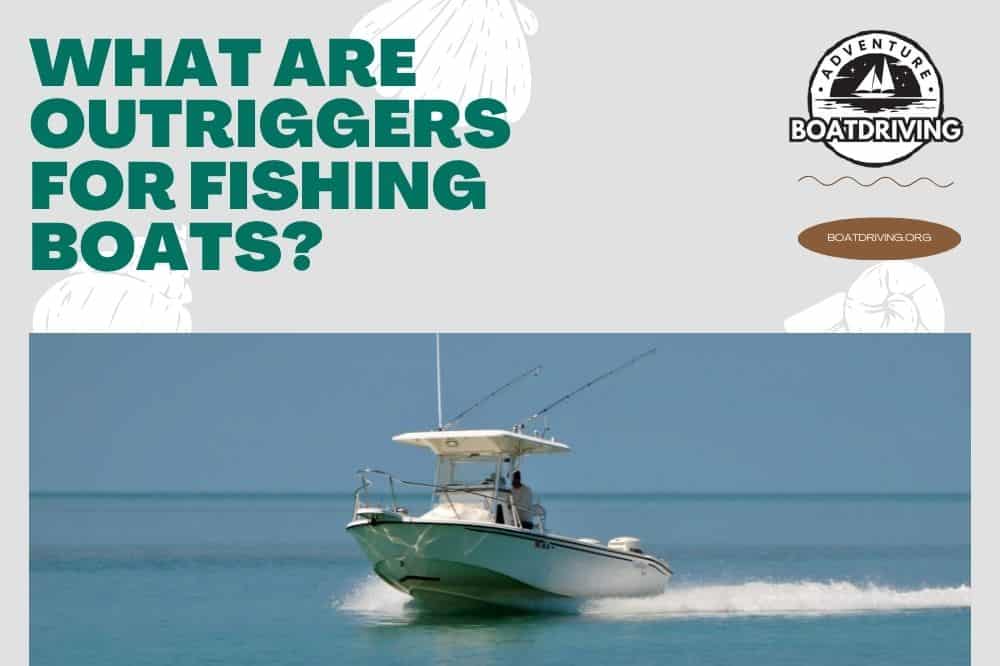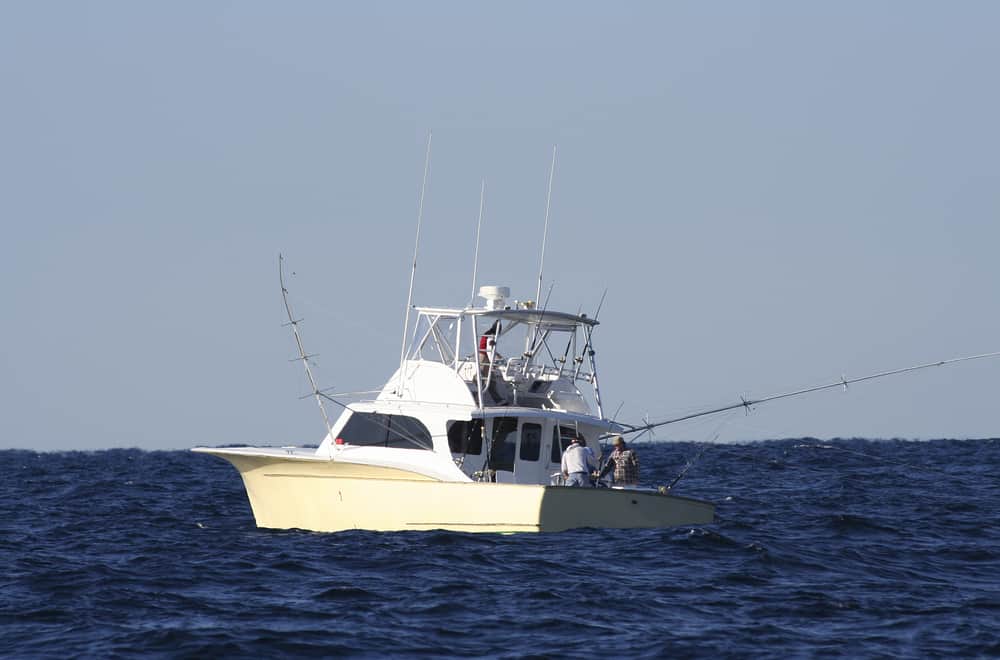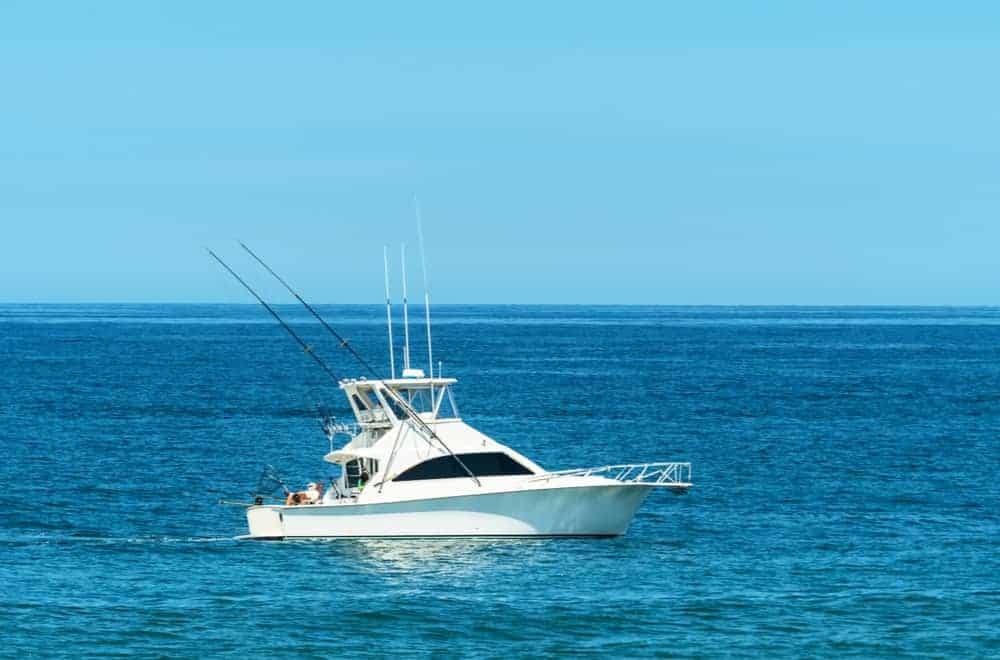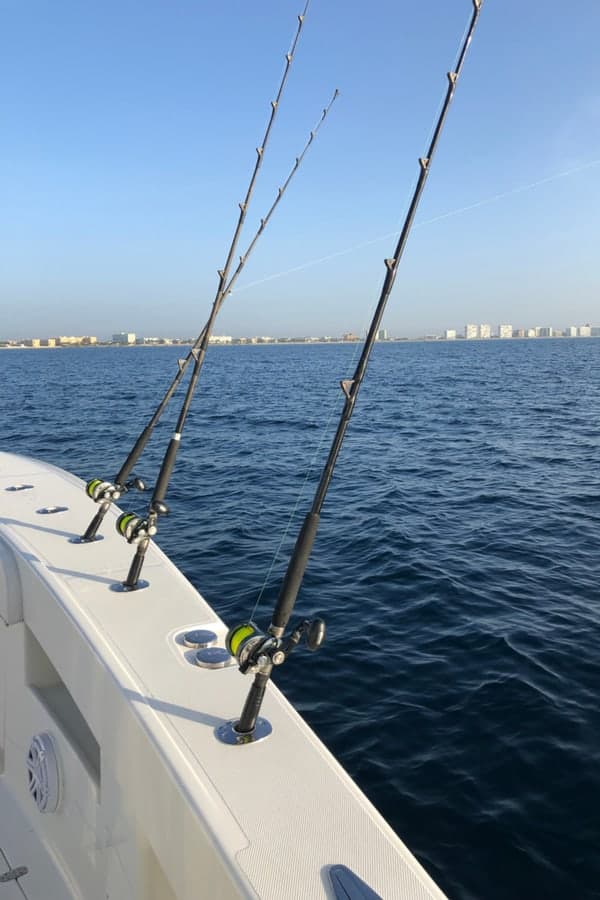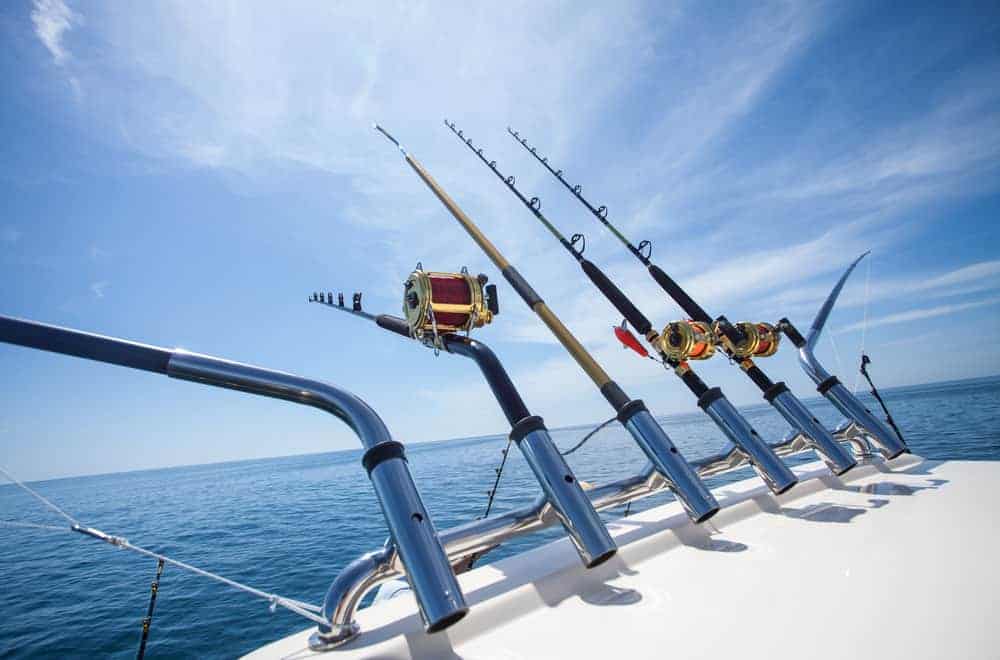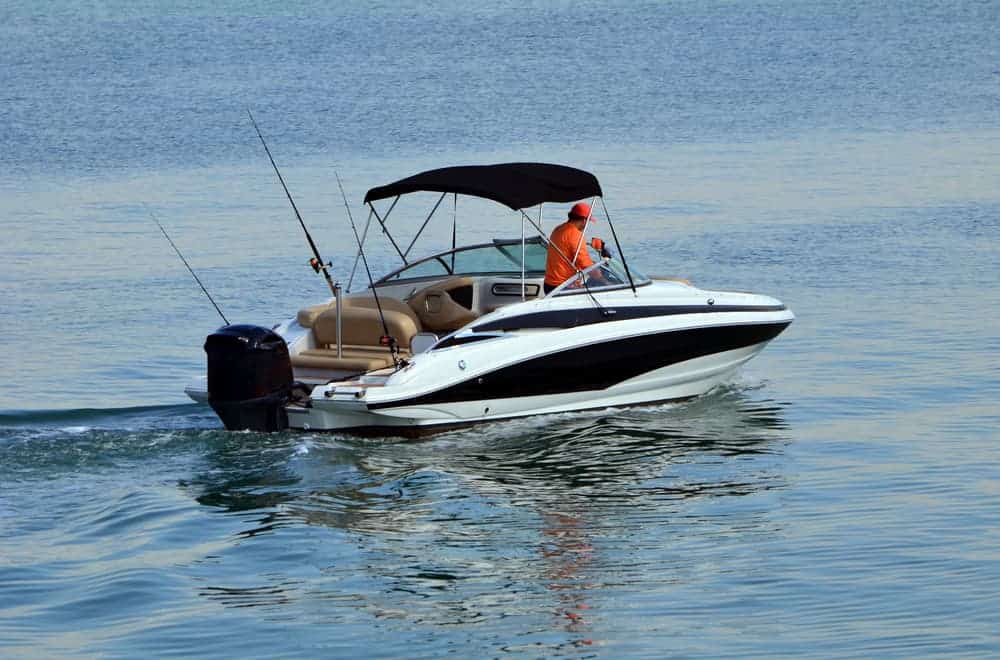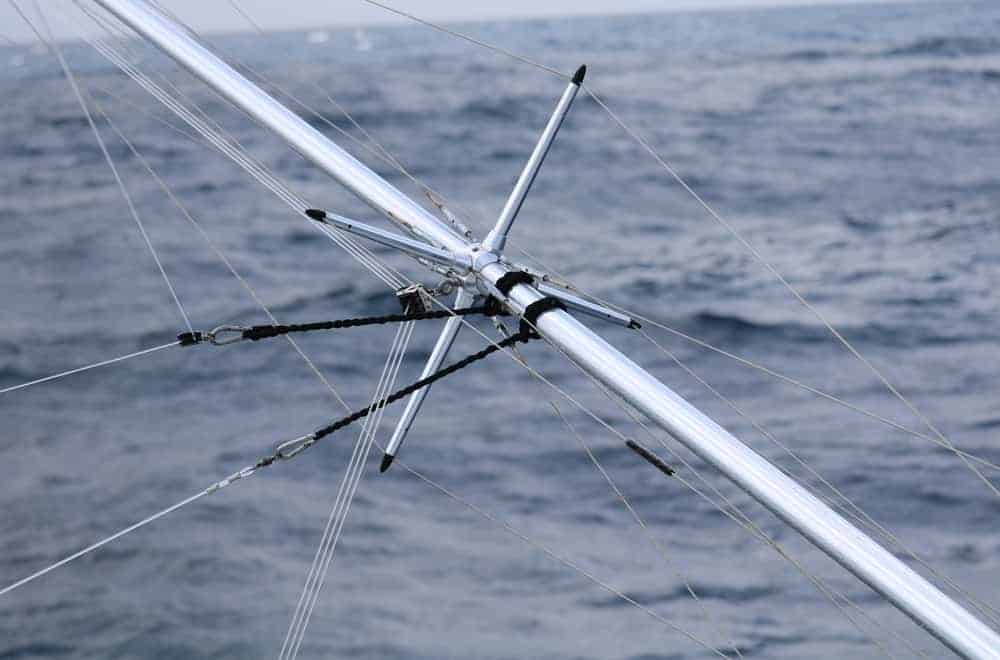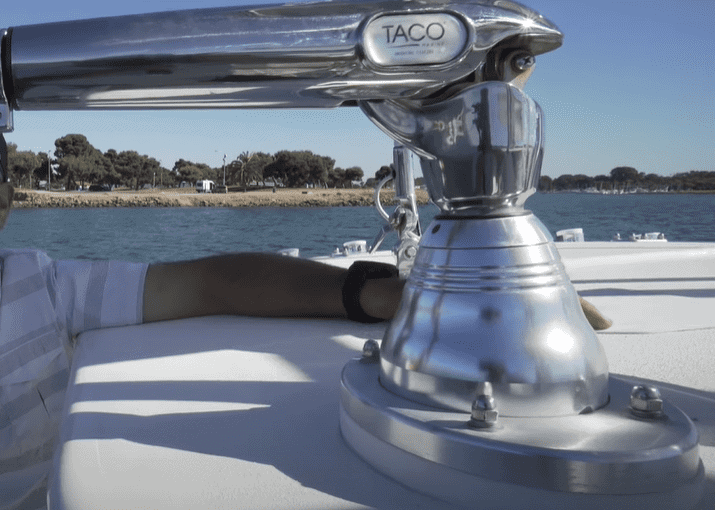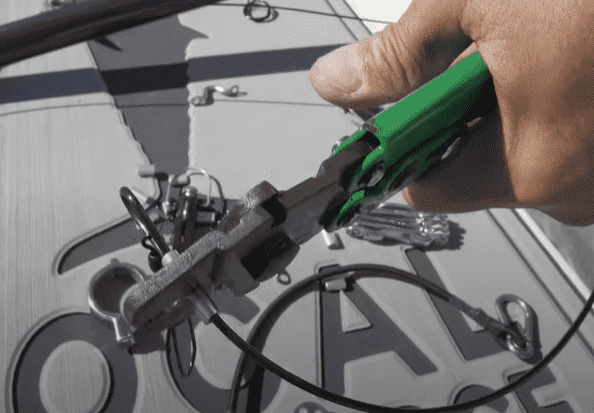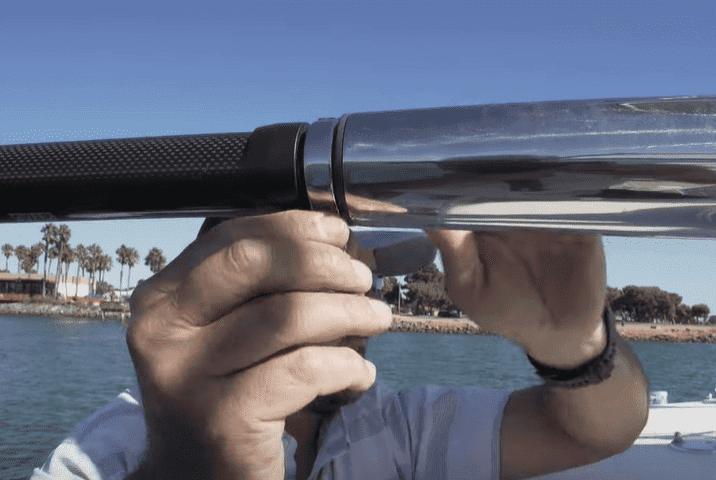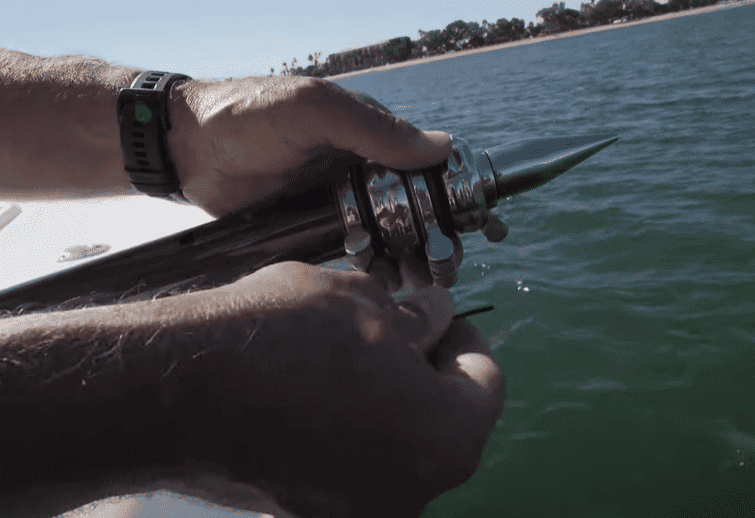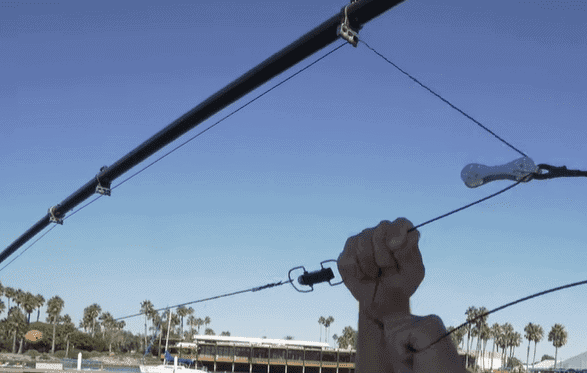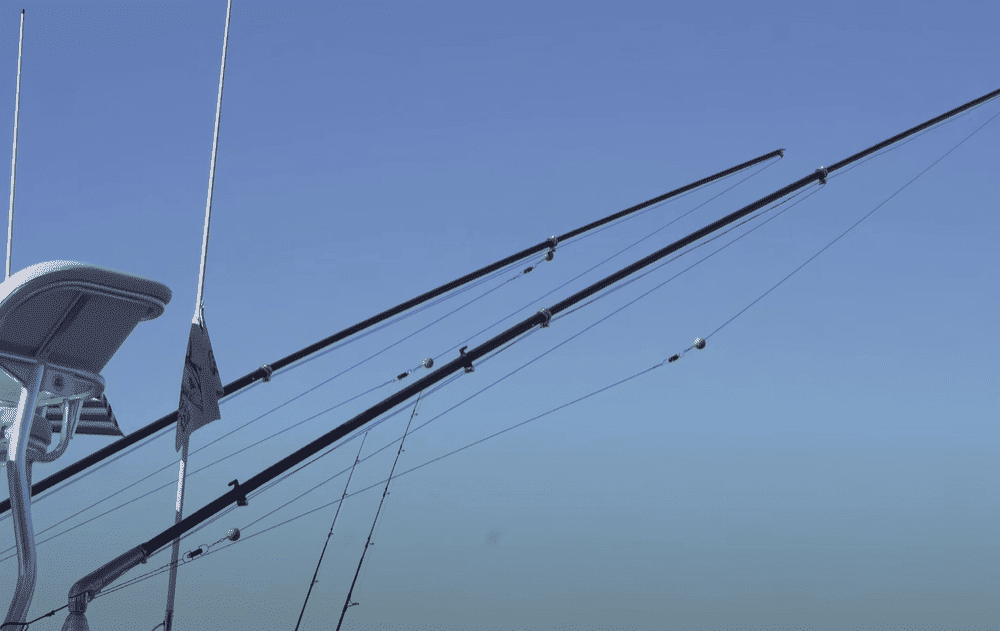Are you considering fishing as a hobby?
Installing outriggers on a boat is one of the best ways to increase your boat’s function and utility.
Whether you are new to fishing or looking for ways to improve your fishing experience, outriggers are an important accessory to familiarize yourself with.
If you’ve been wondering what are outrigger for fishing boats, you’ve come to the right place. In this article, I will explain everything you need to know about fishing boat outriggers. You will learn how these accessories work, what to look for when buying outriggers, and tips on installing outriggers on your own.
So, let’s jump right in!
Table of Contents
What are outriggers for fishing boats?
Outriggers are thin, long, telescopic or rigid poles installed on the sides of a boat and support fishing lines at the back of the boat. These poles are used for a fishing technique known as deep-sea trolling.
Outriggers come in different sizes ranging from as short as 12 feet to 35 feet. The size you install will depend on your fishing boat’s size and what you are comfortable with. The poles are typically made from aluminum or carbon fiber.
How Do Outriggers Work?
Outrigger poles are installed on both sides of the boat. They are tilted at a 70 to 80-degree angle, as close to the water surface as possible.
Each outrigger is outfitted with a pulley and cord. A tension release clip that supports the fishing line is attached to the pulley system. The clip releases the line when a fish strikes, allowing you to capture the fish using the usual fishing reel and rod.
Outriggers allow you to hang as many fishing lines as possible on each pole, improving your chances of striking a fish and your overall fishing experience.
Anglers opt to install outriggers on their fishing boats to make trolling more efficient. Trolling is a fishing technique in which several lines are dragged behind the boat as the vessel moves in the water. Using the trolling technique without outrigger poles is possible, but many modern fishers opt for these poles for their many benefits.
Benefits of Using Outriggers for Fishing Boats
When your boat moves through the water, it produces noises, bubbles, splashing, and a white water wake. All these attract a school of baitfish waiting to be stricken and captured. But, without an efficient outrigger, your fishing endeavor might not be as successful.
The advantages of using outriggers for fishing boats are:
1. Avoid knotted fishing lines
One of the biggest challenges of deep-sea trolling is tangling lines. When fishing lines tangle, untangling them can be inconvenient, and it can dampen your fishing experience and efficiency. This situation often happens when deep-sea trolling is done without outrigger poles.
On the other hand, when you use outriggers, you can comfortably and safely use several fishing lines, all spread out over a wide span of water. Because fishing lines aren’t installed close together, there is little chance for knots and tangles, lowering the fishing efficiency.
2. Increase fishing efficiency
Outriggers ensure that you make the most of your time when out in the deep waters. This means more time spent fishing and less time untangling knotted lines.
In addition, these poles improve your chances of catching more fish. Because the poles are installed on both sides of the boat and spread out across a large span of water, you boost your odds of attracting more fish with your baits.
3. Position bait away from whitewater
Whitewater, also known as a wake, is the turbulence created in the water as your boat moves in the ocean. Fish don’t like staying too close to boats as they avoid the water vibrations. Capturing them can be difficult when fish swim further away from the boat.
Outriggers solve this problem by extending the fishing lines out and positioning the bait farther away from vessels with less turbulence. This way, instead of scaring fish away, you can easily attract them, increasing your catch.
4. Improve the fish visibility
The whitewater left behind by the moving boat can make it hard to see the fish in the water. Without proper visibility, you are literally out on a blind-fishing expedition and are just trying out your luck.
Trying to fish when you cannot see the fish is not the best use of your time or effort. Installing outriggers can improve visibility, which can subsequently boost your catch. By positioning the fishing lines away from the boat and stream of whitewater, outriggers help keep the fish in your line of vision.
Tips For Choosing Outriggers
When you are ready to head out and shop for outriggers, ensure that you buy available poles that will truly improve your fishing experience.
There are some important factors to consider when shopping for or choosing outriggers. Let us take a look at them below:
Material
Outriggers for fishing boats come in various materials, including Kevlar, carbon fibre, fibreglass, and aluminum.
These poles carry heavy fish and fishing lines, and therefore they need to be strong enough to support this weight during deep sea trolling. But, a good outrigger should also be light enough to avoid sagging and eventually snapping under its own weight.
In addition, you should opt for outriggers that are resistant to rust and corrosion due to exposure to salty ocean water. Without a doubt, rust will quickly shorten the lifespan of your outriggers.
Many fishers opt for aluminum outriggers for fishing boats. These types are comparably pocket-friendly and will serve you well if you only do the occasion deep-sea trolling.
Aluminum outriggers are limited by height; they generally do not exceed 18 feet. This limitation can increase the tension on the pole, especially when trolling at high speed.
Boat outriggers made of Kevlar or carbon fiber are increasingly popular. These materials are lightweight and extremely durable, and outriggers come in lengths of over 18 feet.
Design
There are two types of outriggers: fixed-length and telescopic styles.
The fixed-length outriggers are simply solid, un-adjustable poles. These are generally less expensive but serve the purpose of effective deep-sea trolling.
The downside of fixed-outriggers is that they cannot be adjusted; they can be problematic when passing through boat slip clearances or under bridges.
Not only do they make it difficult to pass under low bridges, for example, they can also break apart, leaving significant damage on your boat. When an outrigger gets caught up in a boat clearance slip or bridge, it can also cause your boat to topple over or lean on one side, which can be dangerous.
A more popular option is the telescopic outrigger. This type is adjustable and can be collapsed when necessary. Unlike fixed-length, telescopic outriggers can be extended or shortened to the desired length.
When not in use, you can shorten the length of the outrigger and safely park your fishing boat at your dock or in the slip. The ability to retract the length allows you to safely access low-clearance bridges and slips without worrying about the outrigger breaking and damaging your boat.
Even though it is possible to get fixed-length outriggers to lie flat, the poles will still protrude past the boat’s aft. With telescopic outriggers, you can completely retract the pole so that no part is sticking out, giving you enough clearance to maneuver the boat without any hindrance.
Telescopic outriggers are flexible, safe, and easy to work with. But, they are generally costlier and require more maintenance to keep them in tip-top condition.
Mounting Style
When choosing outriggers for fishing boats, the other factor you should consider is the mounting style. There are generally two ways to mount outriggers: gunwale and hardtop style.
Let us take a look at each style:
- Gunwale mounting style
Gunwale mounting, also known as side-mounting, involves installing the outriggers to the gunwales on both sides of the boat. This is the traditional way of mounting outriggers on fishing boats.
Gunwale mounting style is usually less costly. But, outriggers mounted in this way are typically limited in length and available in sizes of up to 18 feet. Gunwale-mounted outriggers can also be inflexible and may get in the way when turning or maneuvering your boat.
- Hardtop mounting style
Hardtop mounted fishing boat outriggers are installed on the boat’s cabin. This installation method is convenient as it keeps the outriggers out of the way and ensures enough space inside the boat.
But, hardtop mounting is usually costlier than gunwale outriggers. Also, some outrigger bases are inflexible and don’t allow you easily adjust the outrigger’s angle from inside the bat. To do this, you would have to climb to the boat’s radar, which can be quite dangerous and inconvenient when you want to make the best use of your time out in the sea.
Spreaders
When shopping for outriggers for fishing boats, you must also decide whether you need them to come with spreaders. Spreaders are X-shaped vertical bars placed along the length of the outrigger.
Spreaders help strengthen the outrigger poles and keep them rigid to avoid breakage from the weight of large fish.
Some outriggers are outfitted with spreaders. These are the best option if the poles are long or if you prefer to troll at fast speeds targeting larger fish. The spreaders will support the outriggers and improve your fishing experience.
Another advantage of spreaders is that they help separate fishing lines, preventing knotting and tangling while trolling.
Now that you know what to look for when choosing outriggers, you might be wondering how to install these poles in your fishing boat.
The next section will explain the basics of setting up outriggers for fishing boats. For a more in-depth explanation, I recommend that you check out this helpful video.
How To Install Outriggers For Fishing Boats?
While you can hire someone to set up outriggers for you, you can fix these accessories on your own with a little effort and the right tools.
Here are the basic steps to installing fishing boat outriggers:
Step 1. Install the outrigger base
Before setting up the outrigger’s base, you will need to weld the right size extrusion plate on the boat’s T-Top. The extrusion plate will serve as a foundation for mounting the outrigger base. This welding process might require hiring an experienced professional.
You will need to remove or restrain the T-top canvas to provide enough room for welding the outrigger base.
Step 2. Cut a slot in the T-top canvas
Warm a knife, and once it heats up, use it to cut a slot into the canvas—the outriggers with go through these slots.
Step 3. Seal the top area of the T-Top canvas
Use a sealant such as a boat life sealer to secure the mount in place. The sealant also prevents leaking from the T-Top by providing a water-tight connection between the mount and canvas.
Step 4. Install the mount and handle
Next, position the mount at the top and screw it into the extrusion plate you had welded earlier.
Then, you will need to set up the outrigger handle on the base of the mount. Position the handle in the mount and tighten the screws with a screwdriver.
Step 5. Install the poles
Once you install the outrigger mount, the biggest part of the job is done. The next step is to install the outrigger poles.
To get started, insert a locking clip at the bottom of each pole you want to mount. The section clips should align at the bottom of the pole.
Next, insert the bottom of the pole so that the section clip aligns with the base’s opening. That’s it- you have successfully installed your fishing boat outriggers.
Step 6. Rig the outriggers
The final step is to rig your fishing lines. Outrigger kits usually comprise all the items you will need to rig your lines.
You will find a binding chord, cord crimps, snap swivels, crystal circle, and carabiner in your kit, among other rigging paraphernalia.
You will need to park your boat in an open area where the outrigger poles can freely extend to rig your lines. Follow your kit’s manual instructions to set up the rigging hardware.
Congratulations on installing your fishing boat outriggers! Remember, every outrigger brand is different, and the installation process might be slightly different.
Summary: What Are Outriggers For Fishing Boats
Outriggers for fishing boats make deep-sea and nearshore trolling more convenient. Covering a larger span of water improves your chances of catching more fish. Adjustable telescopic poles are slightly costly, but they are less cumbersome as they can be retracted or extended when necessary. Carbon fiber is a better option for its longevity, corrosion resistance, and lightweight when considering the outrigger material.
